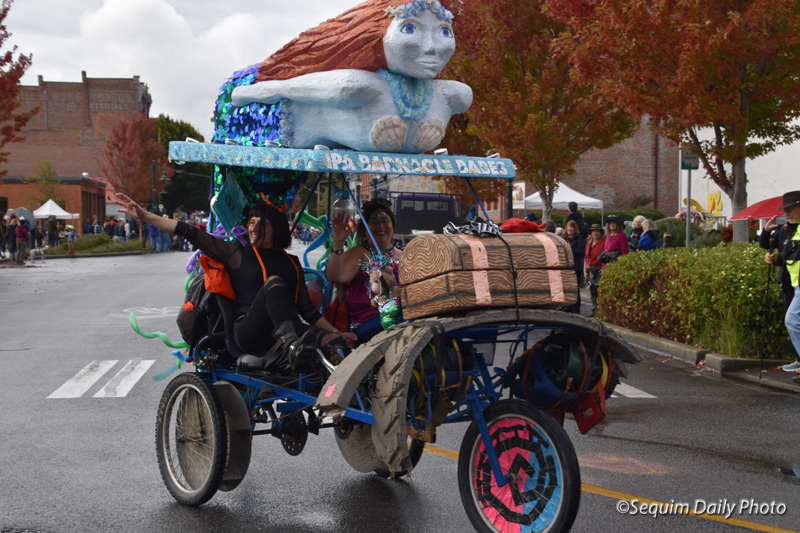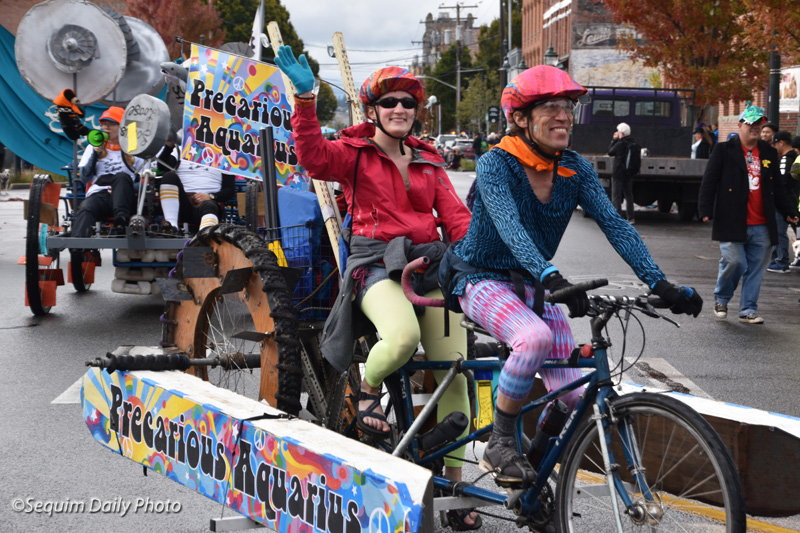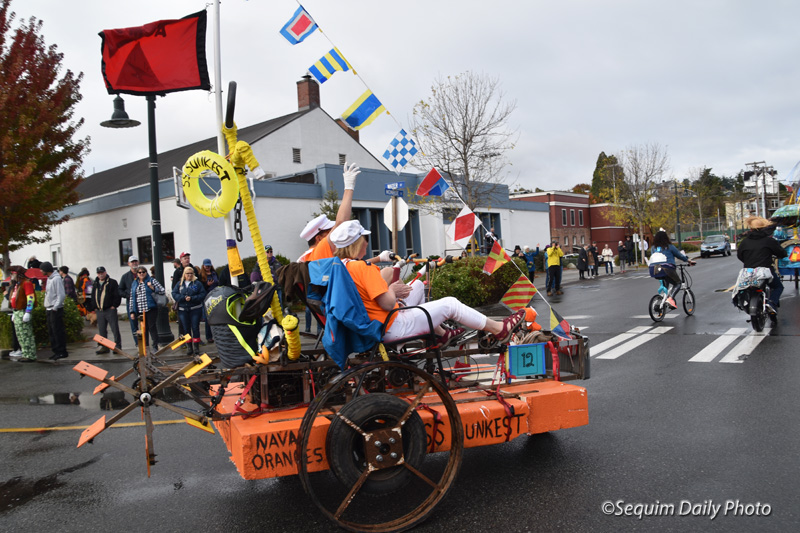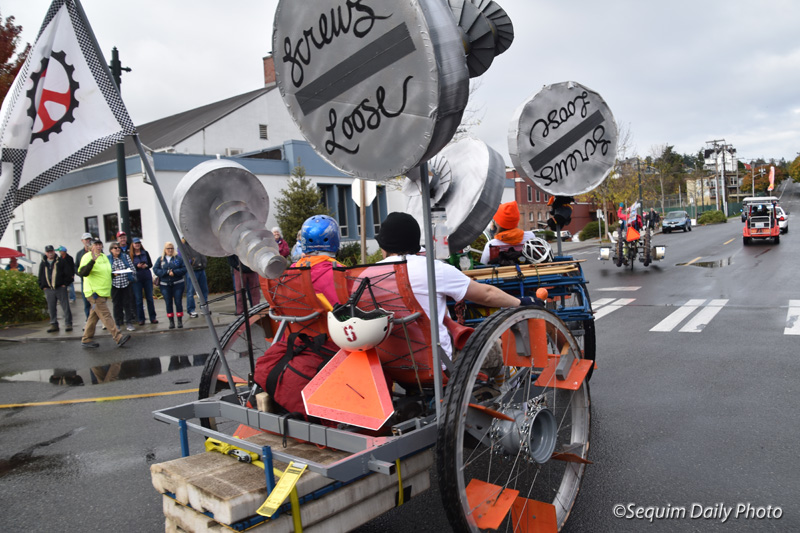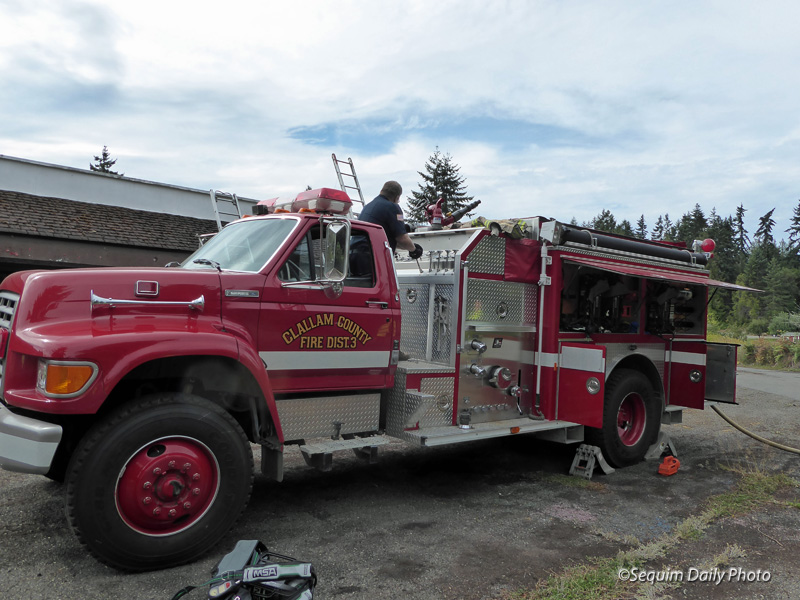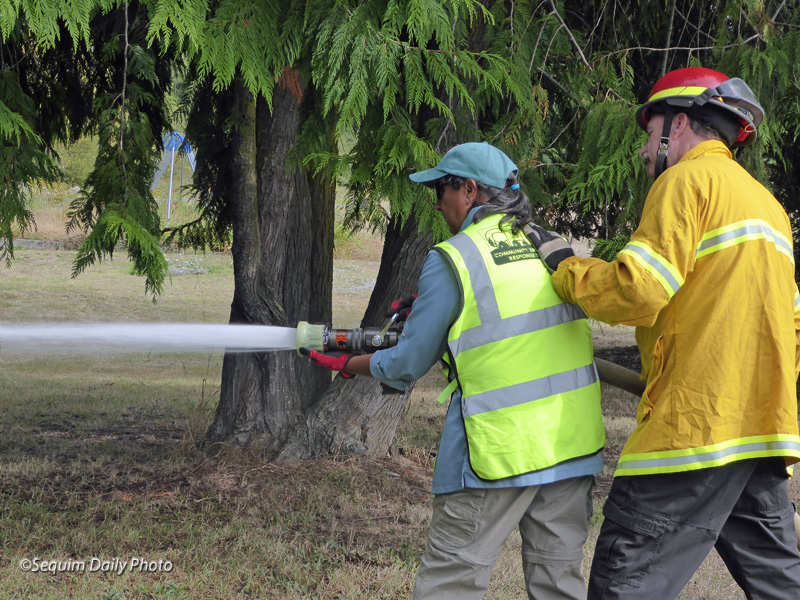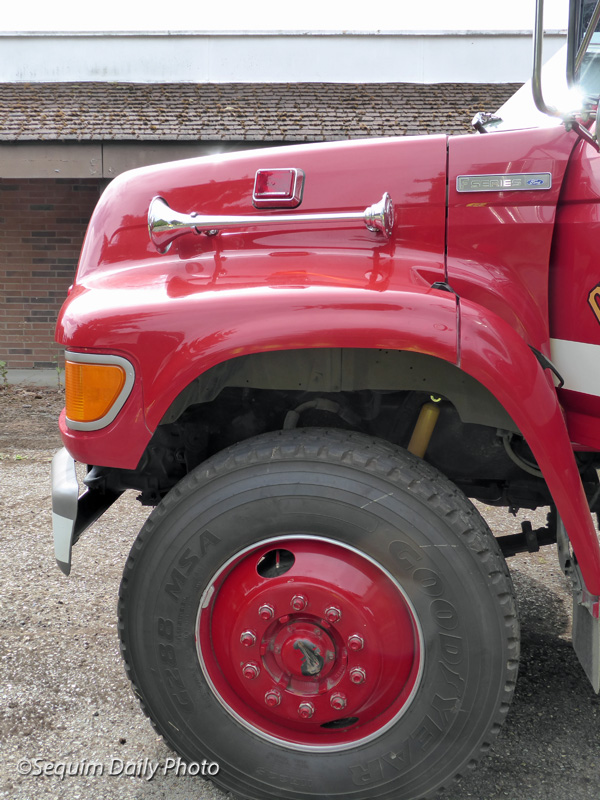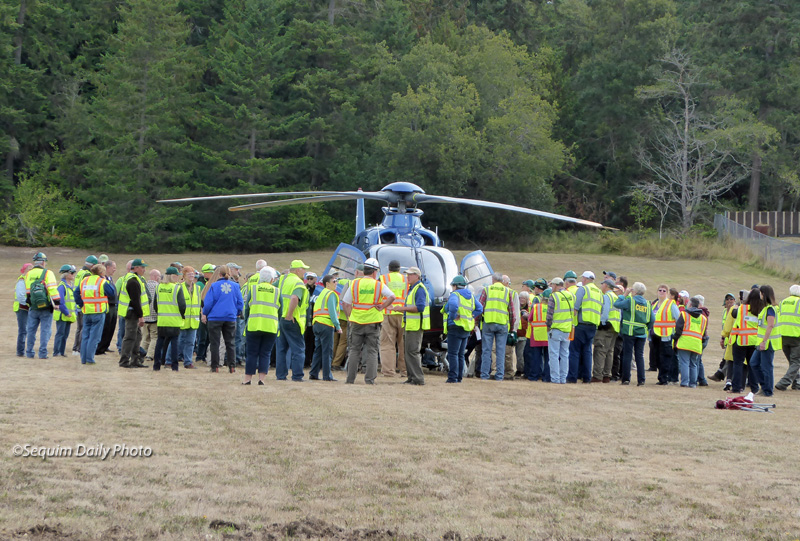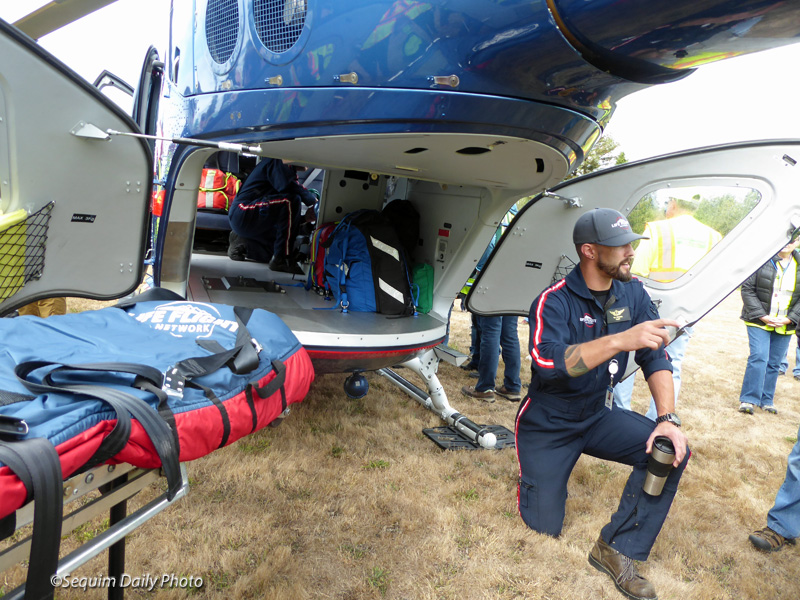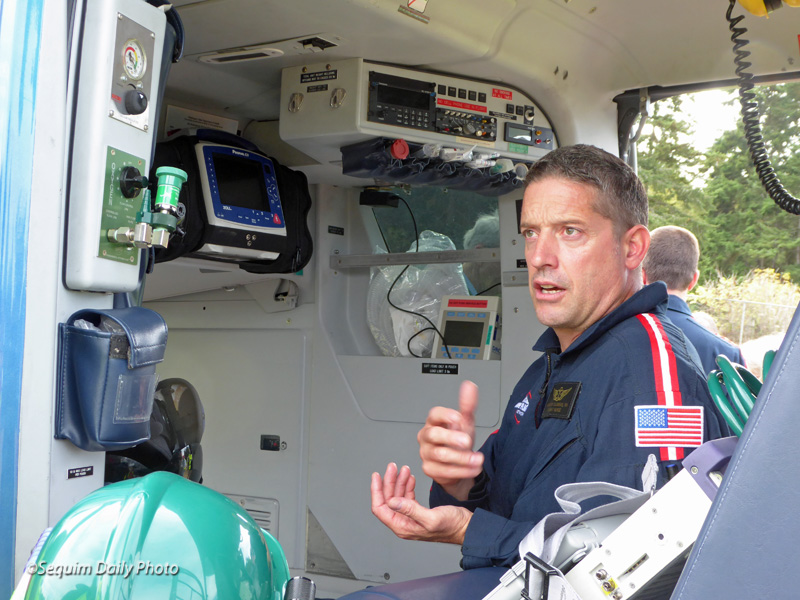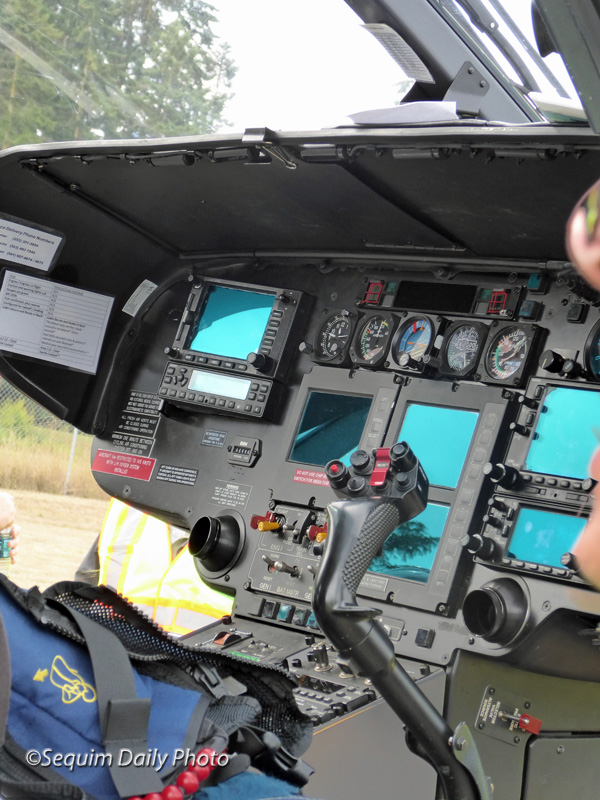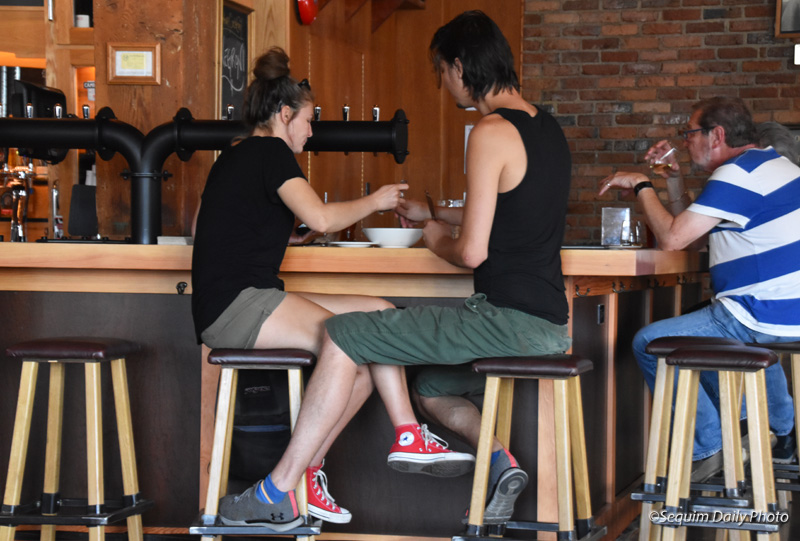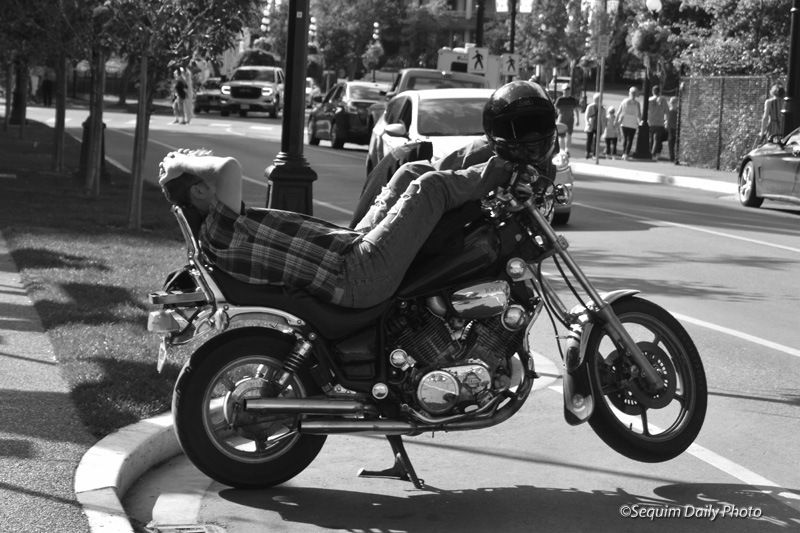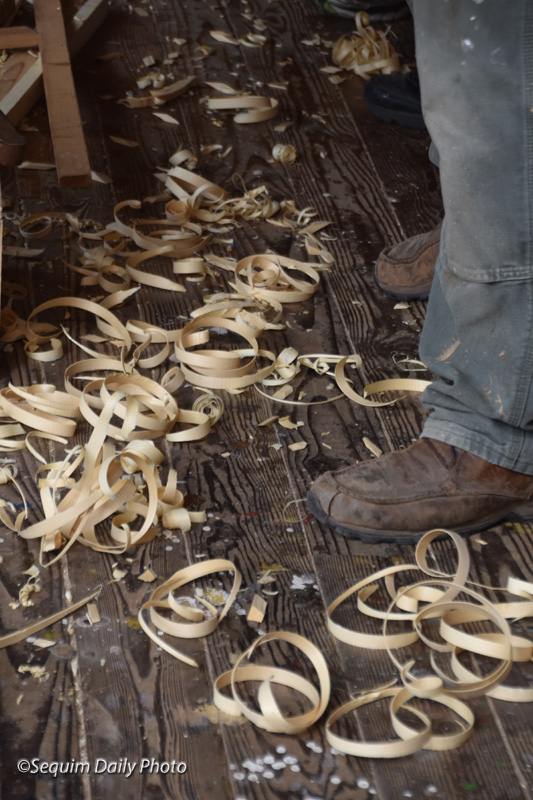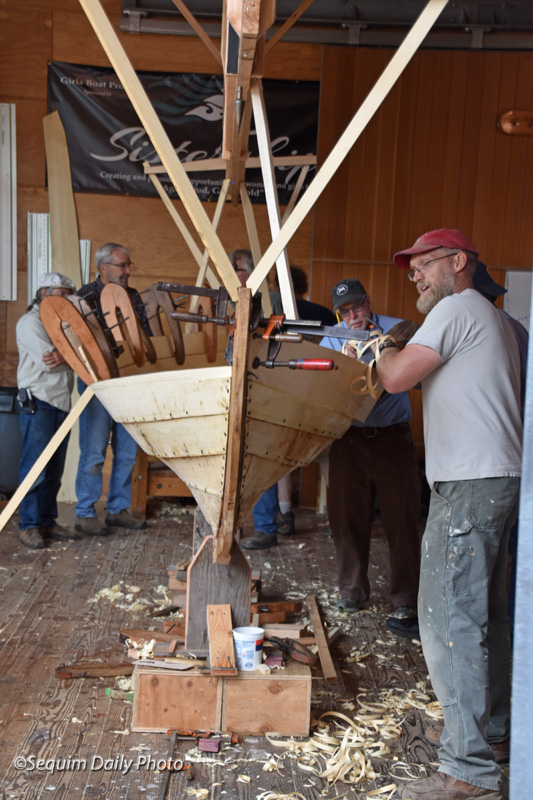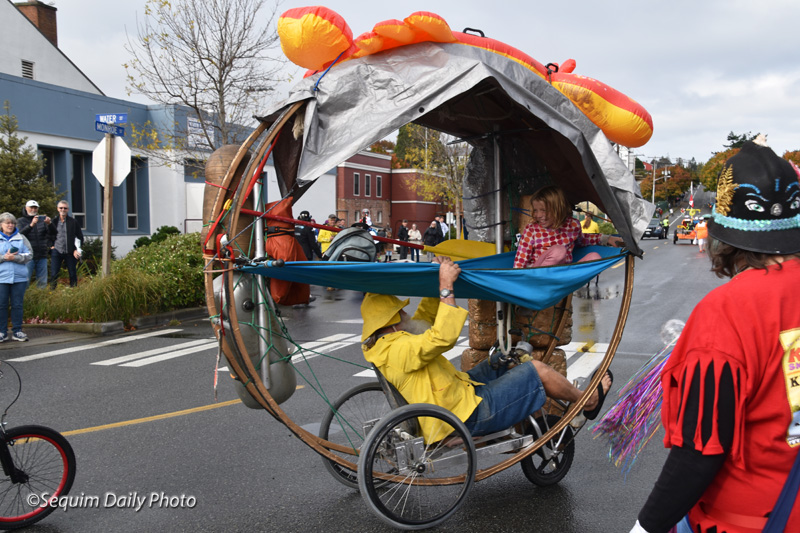
Here is a unique entrant in last Saturday’s 37th Annual Port Townsend Kinetic Skulpture Race, Lobsert Pot Family Man. You’ll see his progress throughout this post. But first, here he is completing his vanity drive at the parade.
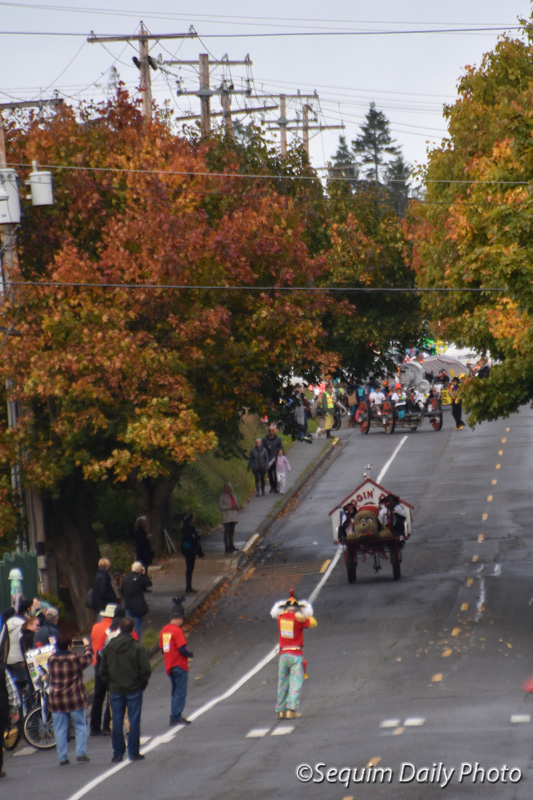
After the parade, all of the entrants had to pass a brake test, one by one driving down a Port Townsend hill and pulling to a stop at the signal of the man in the middle of this shot.
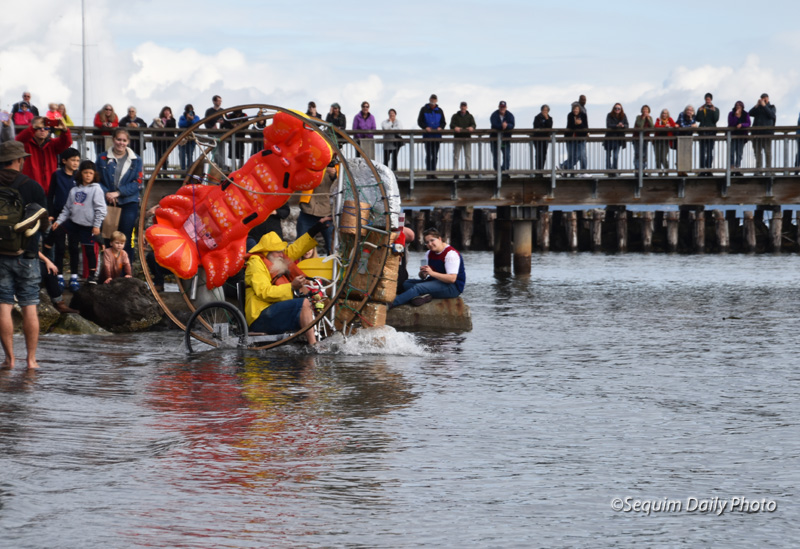
Next comes a launch into Port Townsend Bay. Here you see Lobster Pot taking the plunge. Entrants were required to carry on their unit everything they would need for each part of the competition. Some made adjustments such as shifting around floatation.
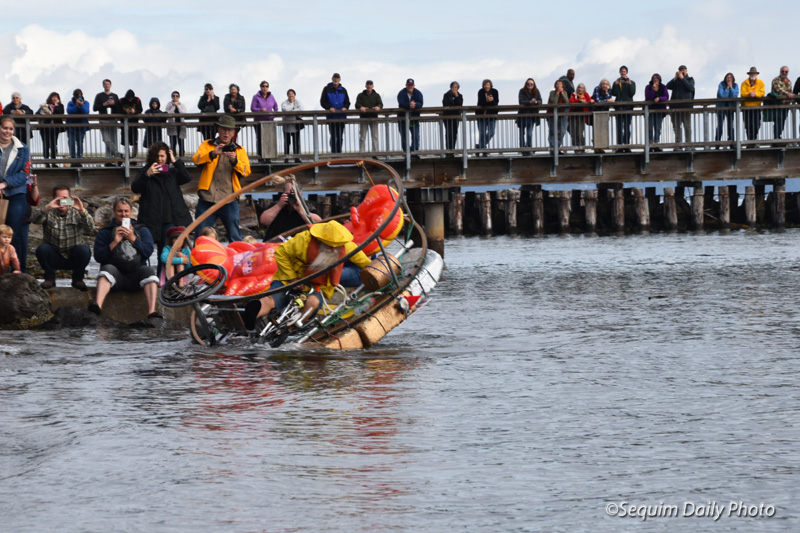
Lobster Pot surprised many of us. He landed in the water and quickly seemed to capsize onto his side.
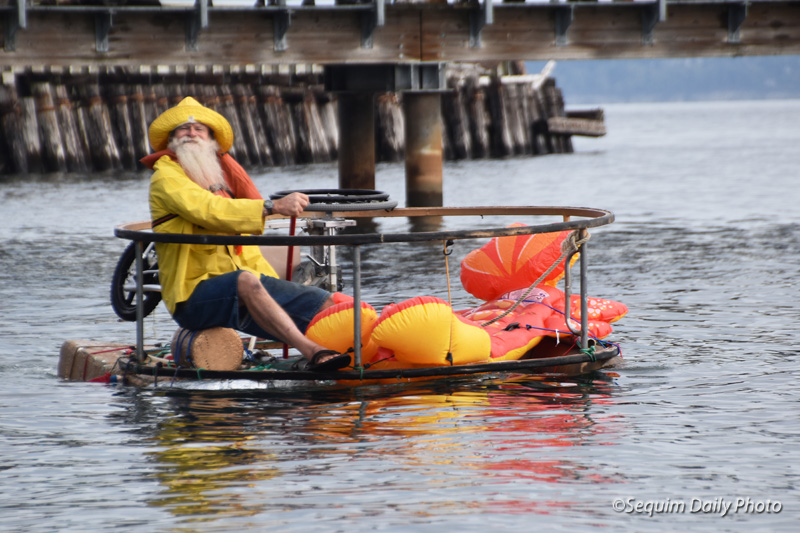
But he pulled out a paddle and launched his improvised vessel. The inflated lobster that had topped his unit became part of the flotation, as did foam blocks. He looks like a proud mariner here, doesn’t he?
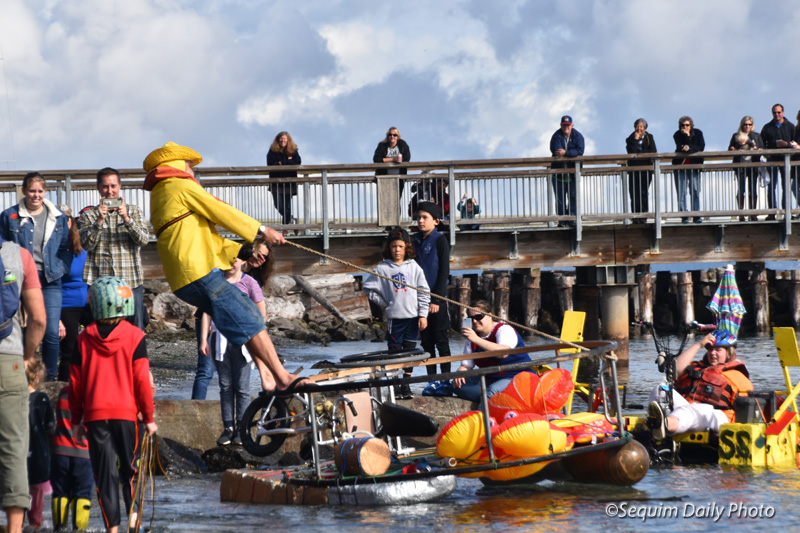
Lobster Pot completed the water course and returned to the launching ramp, facing the return up an incline of 5-6 degrees, the surface coated with a typical combination of sand and seaweed. But first he had to regain land worthy apparatus.
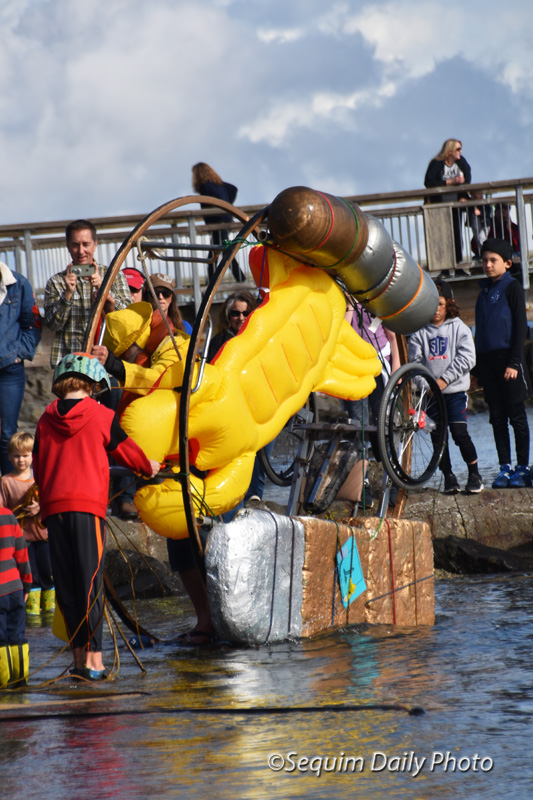
Lobster Pot’s tray table is locked back in the upright position. The wheels at the back were returned to ground, its rider climbed back in and managed to drive the Pot back out of the water onto dry land.
The challenges of the Kinetic Skulpture Race are issued in a spirit of fun. Spelling is phonetic, rules reflect irreverence. The Kinetic Kops, crowd monitors and assistants, have a Kode of Conduct, including “Kinetic Kops tell no lies, but we don’t have to tell the truth” and “Bribes may be taken to overlook infractions.” The top “prize” is the Mediocrity Award for the entrant that finished dead middle in the races. Lobster Pot, incidentally, won the Mediocrity award for 2019.
Fun event? Heck yes! A perfect antidote for the rest of life’s craziness these days. I’ll be showing you other photos of the event
